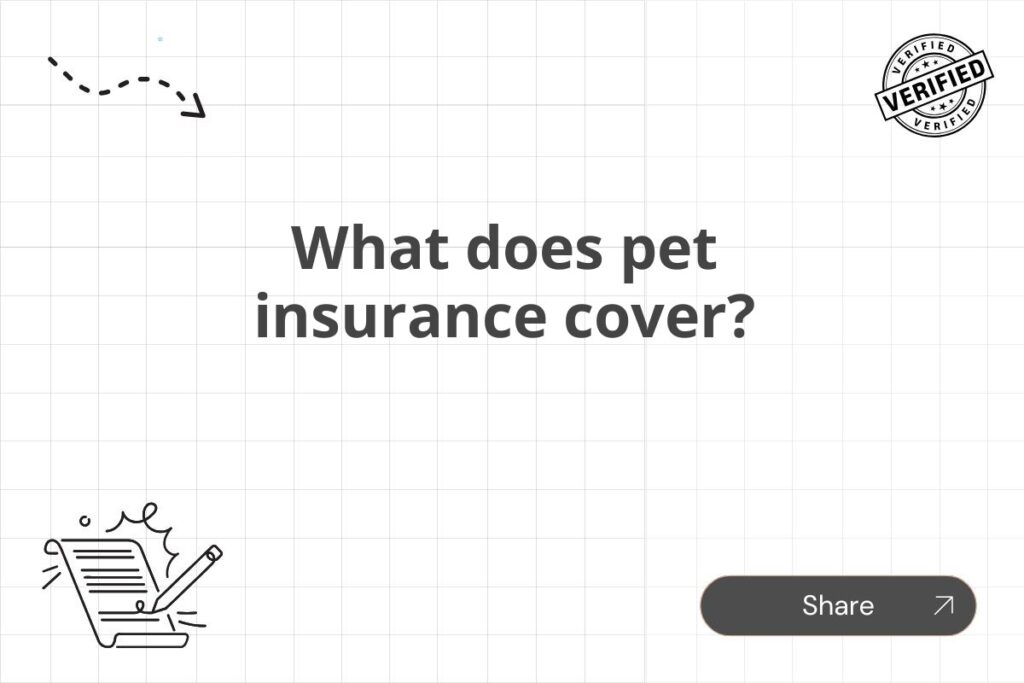Meta Description: Discover what pet insurance typically covers, from accidents and illnesses to routine care. Learn about different coverage options, policy limitations, and how to choose the best plan for your furry friend’s needs. Get informed and protect your pet’s health!
Owning a pet brings immeasurable joy, but it also comes with responsibilities, including the potential for unexpected veterinary costs. These costs can quickly escalate, making pet insurance a crucial consideration for many pet owners. But what exactly
does
pet insurance cover? Understanding the scope of coverage is vital to making an informed decision and ensuring your beloved companion receives the best possible care, regardless of the circumstances.
This comprehensive guide will delve into the intricacies of pet insurance, exploring various coverage options, common exclusions, and factors to consider when choosing a plan. We’ll break down the different types of pet insurance available and help you determine what level of protection best suits your pet’s needs and your budget.
Types of Pet Insurance Coverage
Pet insurance policies aren’t one-size-fits-all. They vary significantly in the types of coverage offered. Generally, pet insurance policies fall into three main categories:
Accident-Only Coverage
This is the most basic level of coverage. As the name suggests, it only covers accidents, such as injuries from falls, car accidents, or ingestion of foreign objects. It typically
does not
cover illnesses, preventative care, or pre-existing conditions.
Accident and Illness Coverage
This is a more comprehensive option, covering both accidents and illnesses. This includes conditions like infections, allergies, cancer, and other diseases. It often offers a broader range of protection compared to accident-only plans.
Comprehensive Coverage
This is the most extensive type of pet insurance and generally covers accidents, illnesses, and preventative care. Preventative care can include annual checkups, vaccinations, dental cleanings, and parasite prevention. Some comprehensive plans may even cover alternative therapies or behavioral treatments.
What Pet Insurance Typically Covers
While the specifics vary depending on the insurer and the chosen policy, most pet insurance plans typically cover a range of veterinary expenses. Here’s a breakdown of common covered items:
- Emergency care: This includes treatment for sudden and unexpected illnesses or injuries, such as broken bones, poisoning, or severe allergic reactions.
- Surgery: Coverage for necessary surgical procedures to address injuries or illnesses.
- Hospitalization: Costs associated with inpatient care at a veterinary hospital.
- Diagnostic tests: Expenses for tests such as X-rays, blood work, ultrasounds, and biopsies to diagnose illnesses.
- Medication: Prescription medications prescribed by a veterinarian to treat illnesses or manage chronic conditions.
- Treatment for illnesses: Expenses associated with the diagnosis and treatment of various illnesses, from infections to cancer.
- Physiotherapy and rehabilitation: Post-operative or injury rehabilitation therapy.
Many comprehensive plans also include coverage for:
- Preventative care: Annual wellness exams, vaccinations, flea and tick prevention, and dental cleanings (often with limitations).
- Alternative therapies: Some policies may offer partial coverage for therapies like acupuncture or chiropractic care.
- Behavioral consultations: Consultations with veterinary behaviorists to address behavioral issues.
What Pet Insurance Typically Does
Not
Cover
It’s equally important to understand what pet insurance typically
excludes
. Common exclusions include:
- Pre-existing conditions: Conditions your pet had before the policy started are generally not covered. This is a significant factor to consider when purchasing pet insurance.
- Routine checkups (in some plans): While some comprehensive plans include routine care, others don’t, or offer limited coverage.
- Breeding expenses: Costs associated with pregnancy and whelping are usually excluded.
- Cosmetic procedures: Procedures solely for cosmetic purposes, such as tail docking or ear cropping.
- Dental care (in some plans): Dental care can be partially or fully excluded, or may have limitations.
- Pre-existing conditions of any kind: This is one of the most important points to consider when shopping for a policy.
- Injuries related to certain activities Some policies might not cover injuries sustained during specific activities, such as dog fighting or hunting.
Choosing the Right Pet Insurance Plan
Selecting the right pet insurance plan requires careful consideration of several factors:
- Your pet’s breed and age: Certain breeds are predisposed to specific health issues, which can influence your choice of coverage.
- Your budget: Premiums vary significantly depending on the level of coverage and your pet’s characteristics.
- Your pet’s health history: Be upfront about your pet’s health history when applying for insurance.
- Reimbursement percentage: Understand the percentage of veterinary bills the insurer will cover.
- Annual deductible: The amount you must pay out-of-pocket before the insurance coverage kicks in.
- Annual payout limit: The maximum amount the insurer will pay out in a year.
- Waiting periods: The time you must wait after purchasing the policy before certain types of coverage become effective.
Reading the Fine Print
Before committing to a pet insurance policy, carefully review the policy documents. Pay close attention to the terms and conditions, including the exclusions, limitations, and reimbursement process. Don’t hesitate to contact the insurance provider if you have any questions or require clarification.
Choosing pet insurance is a significant decision that can provide peace of mind and financial protection for your pet. By understanding what pet insurance typically covers and doesn’t cover, and by carefully comparing different policies, you can select the plan that best meets your pet’s needs and your budget. Remember, protecting your pet’s health is an investment worth making.






















